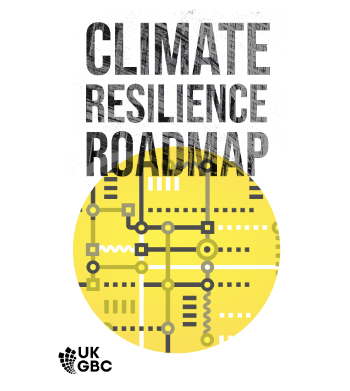Capital carbon
Embodied Carbon: Developing a Client Brief, published by the UK Green Building Council (UKGBC) in March 2017, suggests capital carbon: ‘…refers to emissions associated with the creation of an asset. Capital carbon is being adopted within the infrastructure sector because it accords with the concept of capital cost. (Going forward, the related term “embodied carbon” will continue to be used at a product-level, whereas capital carbon will have greater relevance at an asset-level).’
PAS 2080:2023 Carbon management in buildings and infrastructure, second edition, published by The British Standards Institution in March 2023, defines capital carbon as: ‘capital carbon GHG emissions and removals associated with the creation and end-of-life treatment of an asset, network or system, and optionally with its maintenance and refurbishment.'
It includes 3 notes:
- NOTE 1 GHG emissions associated with maintenance and refurbishment are included as “optional” under the capital carbon definition because they could also be defined as “operational carbon” emissions, depending on the chosen assessment methodology. The selected terminology is to be clarified as part of the assessment methodology process (see Clause 7).
- NOTE 2 PAS 2080 recognizes the use of the established terms “embodied carbon” and “upfront carbon” by parts of the industry (in accordance with existing life cycle assessments standards and guidance) to refer to similar stages of a whole life carbon assessment. For the purpose of PAS 2080, “capital carbon” is the selected terminology to allow comparison/alignment with the cost management/expenditure profile of projects and/or programmes of work (see Note 3). The selected terminology is to be clarified by the practitioner (as described in Clause 7) and considered in the context of the PAS 2080 whole life carbon framework for decision-making in Clause 4.
- NOTE 3 As defined in the Infrastructure carbon review [1], capital carbon can be alternatively defined as the GHG emissions associated with the scope of capital expenditure defined in accordance with the asset owner’s preference.
[edit] Related articles on Designing Buildings
Featured articles and news
Latest Build UK Building Safety Regime explainer published
Key elements in one short, now updated document.
UKGBC launch the UK Climate Resilience Roadmap
First guidance of its kind on direct climate impacts for the built environment and how it can adapt.
CLC Health, Safety and Wellbeing Strategy 2025
Launched by the Minister for Industry to look at fatalities on site, improving mental health and other issues.
One of the most impressive Victorian architects. Book review.
Common Assessment Standard now with building safety
New CAS update now includes mandatory building safety questions.
RTPI leader to become new CIOB Chief Executive Officer
Dr Victoria Hills MRTPI, FICE to take over after Caroline Gumble’s departure.
Social and affordable housing, a long term plan for delivery
The “Delivering a Decade of Renewal for Social and Affordable Housing” strategy sets out future path.
A change to adoptive architecture
Effects of global weather warming on architectural detailing, material choice and human interaction.
The proposed publicly owned and backed subsidiary of Homes England, to facilitate new homes.
How big is the problem and what can we do to mitigate the effects?
Overheating guidance and tools for building designers
A number of cool guides to help with the heat.
The UK's Modern Industrial Strategy: A 10 year plan
Previous consultation criticism, current key elements and general support with some persisting reservations.
Building Safety Regulator reforms
New roles, new staff and a new fast track service pave the way for a single construction regulator.
Architectural Technologist CPDs and Communications
CIAT CPD… and how you can do it!
Cooling centres and cool spaces
Managing extreme heat in cities by directing the public to places for heat stress relief and water sources.
Winter gardens: A brief history and warm variations
Extending the season with glass in different forms and terms.
Restoring Great Yarmouth's Winter Gardens
Transforming one of the least sustainable constructions imaginable.






















